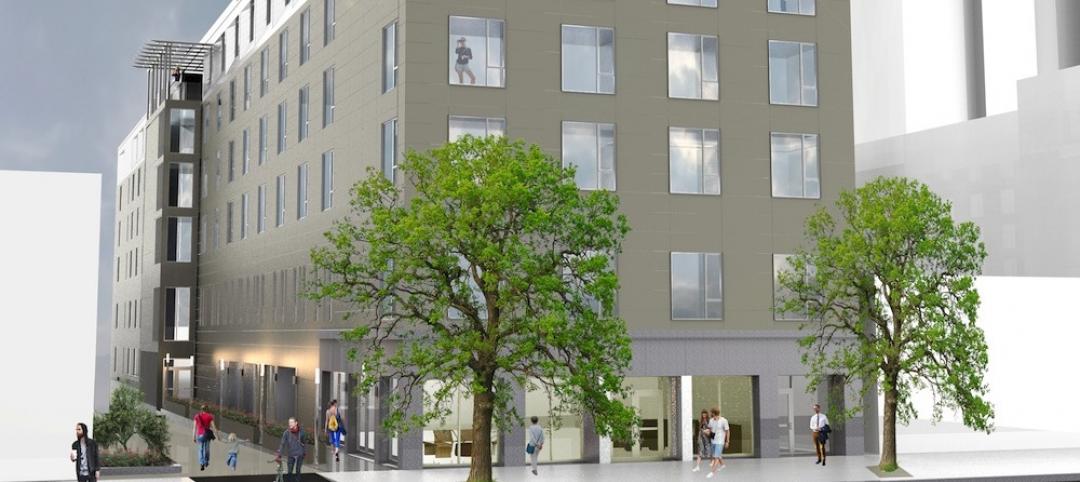In early March, the 80-seat Heights Restaurant & Bar opened on the 10th floor of the Smith Campus Center at Harvard University, in the heart of Harvard Square in Cambridge, Mass. This is the latest addition to a “common spaces” initiative that Harvard’s former President Drew Faust launched in 2008 to create a singular area on campus where thousands of faculty, students, staff, and visitors can congregate.
Harvard now boasts 385,000 sf of dedicated community space within the H-shaped Richard A. and Susan F. Smith Campus Center. The public can access the first floor and most of the second floor of the Center, which along with the 10th floor underwent a 36-month reconstruction and renovation that was completed last September, and entailed the excavation of 975 tons of demolition debris.
This project’s community and user outreach was extensive, with 25 focus groups and a survey that received 600 responses. The University also conducted a furniture showcase in the fall of 2016, around the same time that construction began.
 Harvard University's “One Harvard” concept creates a gathering place for students, faculty, staff, and the community. Image: Courtesy of Consigli Construction
Harvard University's “One Harvard” concept creates a gathering place for students, faculty, staff, and the community. Image: Courtesy of Consigli Construction
These efforts helped inform the redesigns by Hopkins Architects. (Bruner/Cott & Associates was the executive architect.) Consigli Construction executed the complete gutting of the 10th floor, and selective remodeling on the two lower floors that include the Moise Y. Safra Welcome Pavilion and Plaza, says Todd McCabe, Consigli’s Vice President-Project Services, who with John Lehane, the firm’s Project Manager, spoke with BD+C last week.
The renovation recreated the building’s Arcade (where most of the restaurants are) from a dungeon-like “two stories of concrete,” says Lehane, to a more inviting space with “more glass, new programming, and a large landscape area” with three or four green walls irrigated with UV-filtered rainwater. (Michael Van Valkenburgh Associates was the landscape architect.)
He says that one of this project’s biggest challenges was restoring the building’s façade and expanding the former Holyoke Center, which required the structural demolition of a two-story annex over a parking garage and then putting a three-story building in its place. The building’s “front door” is now highlighted by a two-story curtainwall. There’s also a three-story curtainwall on the Holyoke Street side of the building.

The remodeled building includes several green walls that are irrigated by UV-filtered rainwater. Image: Consigli Construction
Outside, new plazas open onto two thoroughfares.
Lehane notes that “what often gets overlooked” in projects like these is the MEP system. Working with engineer Arup, Consigli dedicated a MEP manager to “trace out” the system in order to keep it operable, as 500 people continued to work in the Center during the renovation, and thousands more walked through it every day. (The Center houses several of the university’s departments as well as Harvard University Health Services.)
All told, there were between 20 and 25 Building Team members on this project, says McCabe, including Consigli’s VDC team, which used virtual design tools for communications and planning, especially for occupied areas within the building.
Related Stories
University Buildings | Jun 9, 2016
Designing for interdisciplinary communication in university buildings
Bringing people together remains the main objective when designing academic projects. SRG Design Principal Kent Duffy encourages interaction and discovery with a variety of approaches.
Building Team Awards | May 31, 2016
Gonzaga's new student center is a bustling social hub
Retail mall features, comfortable furniture, and floor-to-ceiling glass add vibrancy to the new John J. Hemmingson Center.
University Buildings | May 26, 2016
U. of Chicago approves Diller Scofidio + Renfro design for new campus building
With a two-story base and 165-foot tower, the Rubenstein Forum will have room for informal meetings, lectures, and other university events.
University Buildings | Apr 27, 2016
SmithGroupJJR’s Electrical and Computer Engineering Building named 2016 Lab of the Year
Sustainable features like chilled beams and solar screens help the University of Illinois research facility use 50% less energy than minimum building energy efficiency standards.
University Buildings | Apr 25, 2016
New University of Calgary research center features reconfigurable 'spine'
The heart of the Taylor Institute can be anything from a teaching lab to a 400-seat theater.
University Buildings | Apr 13, 2016
Technology defines growth at Ringling College of Arts & Design
Named America's “most wired campus" in 2014, Ringling is adding a library, visual arts center, soundstage, and art museum.
University Buildings | Apr 13, 2016
5 ways universities use new buildings to stay competitive
From incubators to innovation centers, schools desire ‘iconic gateways’ that appeal to students, faculty, entrepreneurs, and the community.
University Buildings | Apr 4, 2016
3 key trends in student housing for Boston’s higher education community
The city wants to add 18,500 student residence beds by the year 2030. CannonDesign's Lynne Deninger identifies three strategies that will help schools maximize value over the next decade or so.
University Buildings | Mar 15, 2016
Behnisch Architekten designs Harvard’s proposed Science and Engineering Complex
The 497,000-sf building will be the home of the John A. Paulson School of Engineering and Applied Sciences.
University Buildings | Mar 11, 2016
How architects can help community colleges promote community on campus
Even in the face of funding challenges and historic precedent, there are emerging examples of how partnership between two-year academic institutions and designers can further elevate community on campus. CannonDesign's Carisima Koenig has a few key examples.

















